Arriving at the long-abandoned IK Hospital on a bright and unusually mild winter morning, the faded wooden buildings of the main hospital on the left, and doctors’ surgery on the right, were surprisingly welcoming.
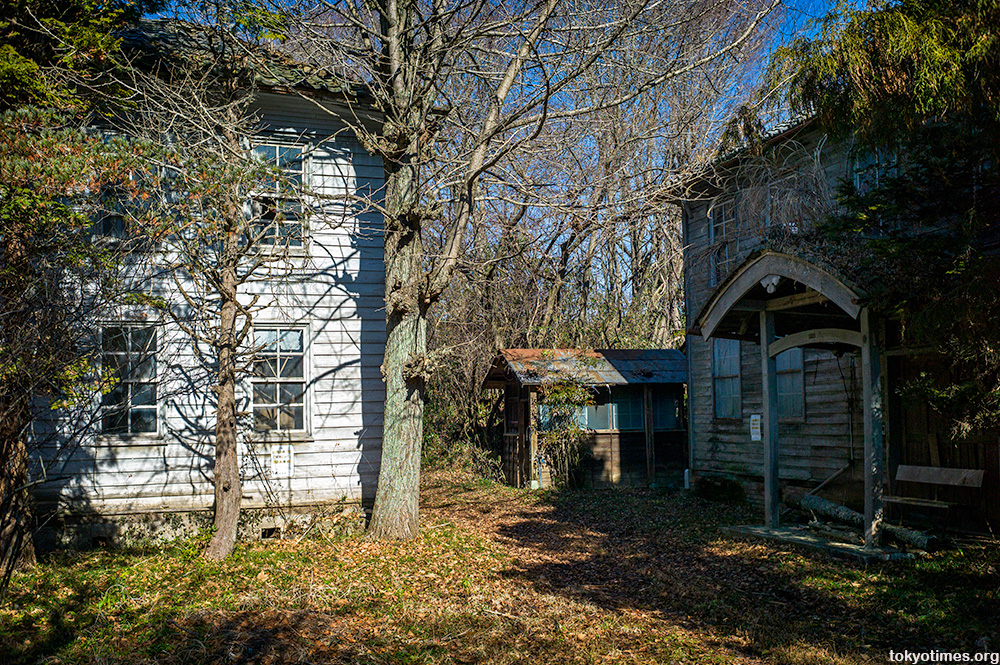
In the shade and the surgery, however, it wasn’t quite so appealing. The entrance immediately suggesting the interior would be very different.
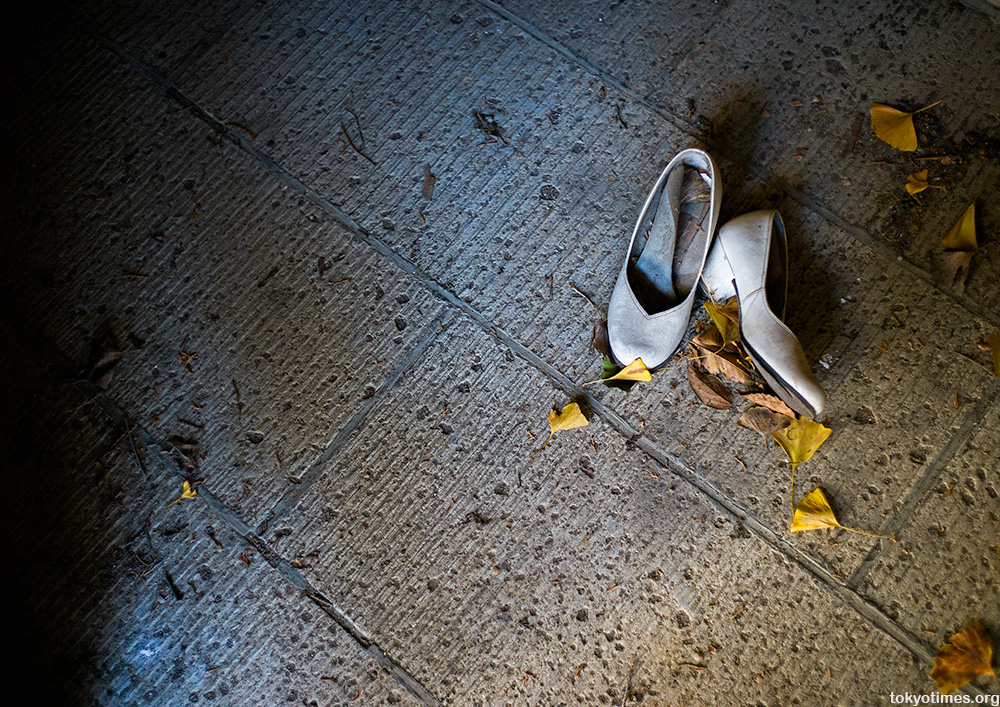
Which the horribly dated and incredibly dreary waiting room quickly confirmed.
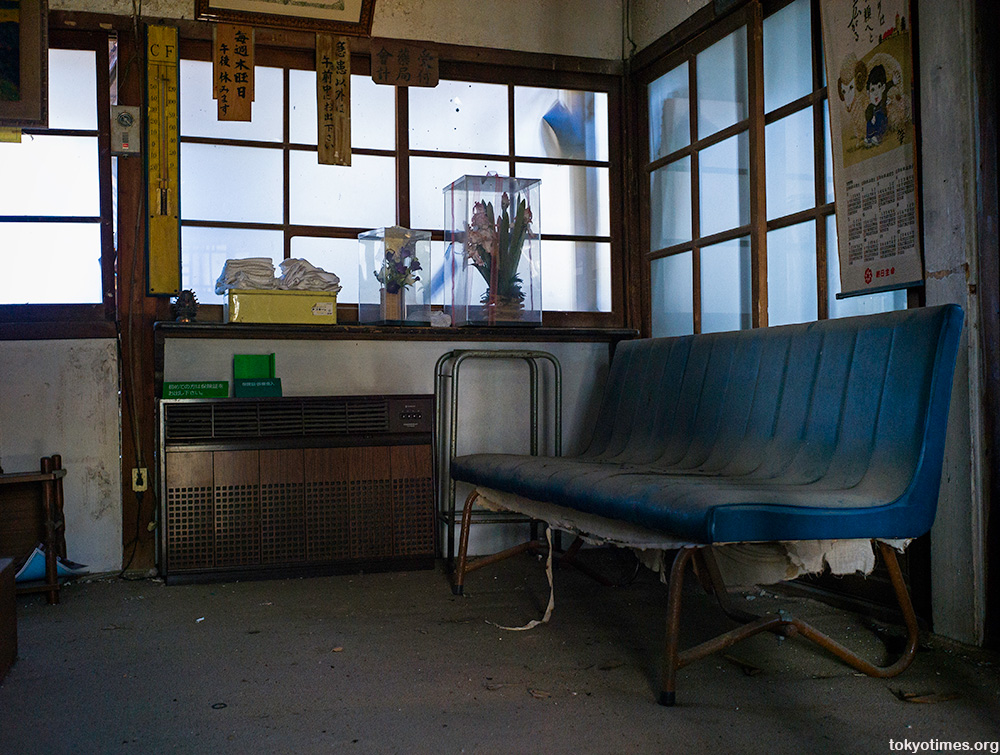
A decidedly gloomy atmosphere that the wall hangings and random ornaments completely failed to dispel.
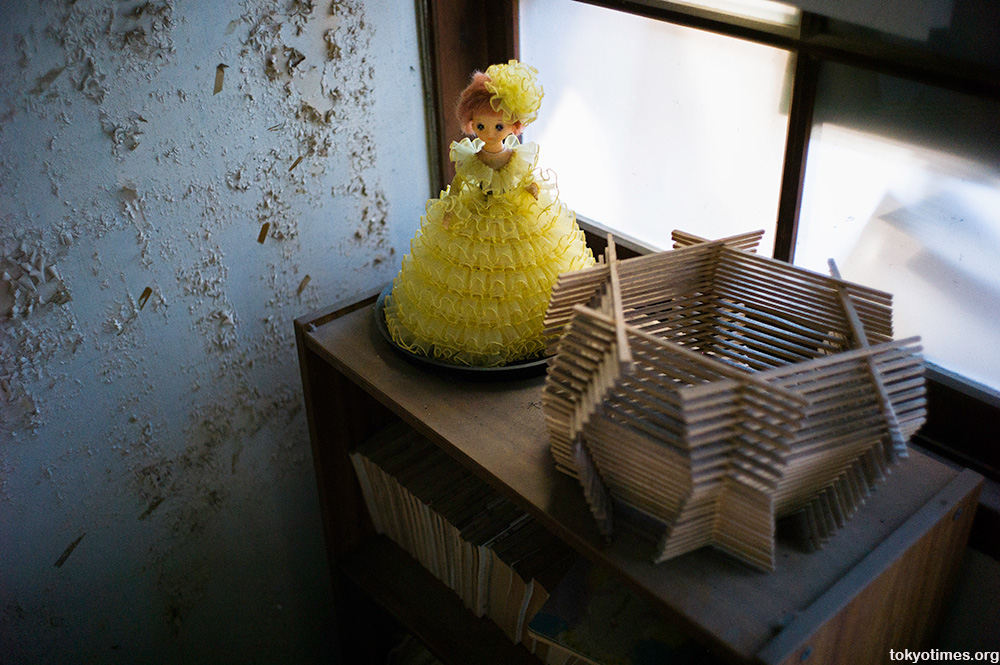
Opened in 1951, the hospital specialised in internal medicine, paediatrics and obstetrics/gynaecology. And being very much on the small side — with only 8 or so rooms in the hospital, and half that in the surgery — it’s easy to imagine it being a relatively quiet, close-knit institution. Particularly so as it served a fairly rural and sparsely populated area.
But now it merely serves as a reminder, and similarly there are lots of them in regards its former function, with a whole host of medical equipment and paraphernalia strewn about the place.
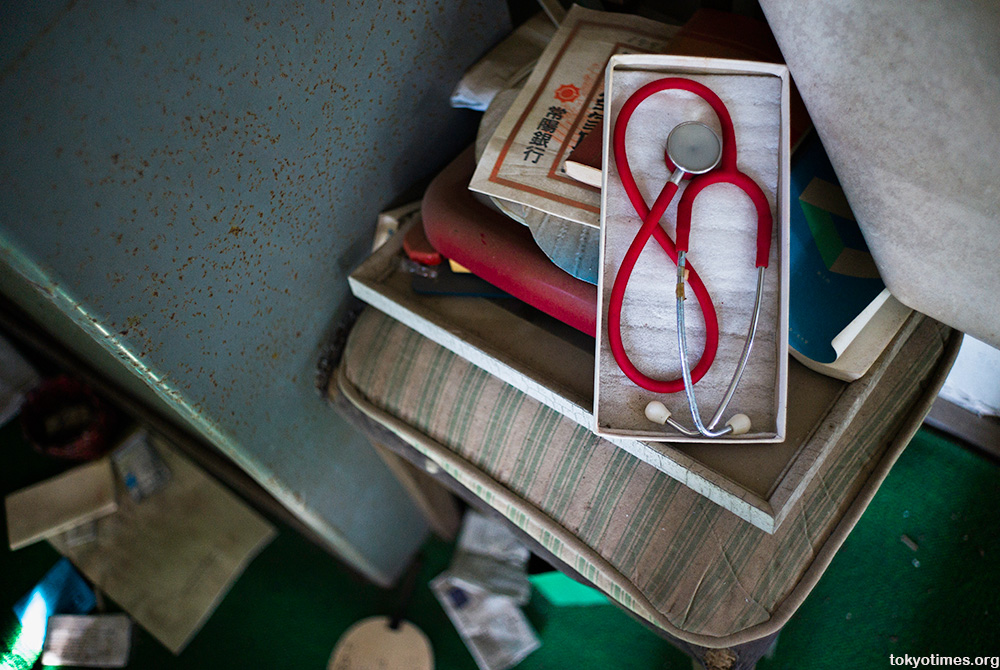
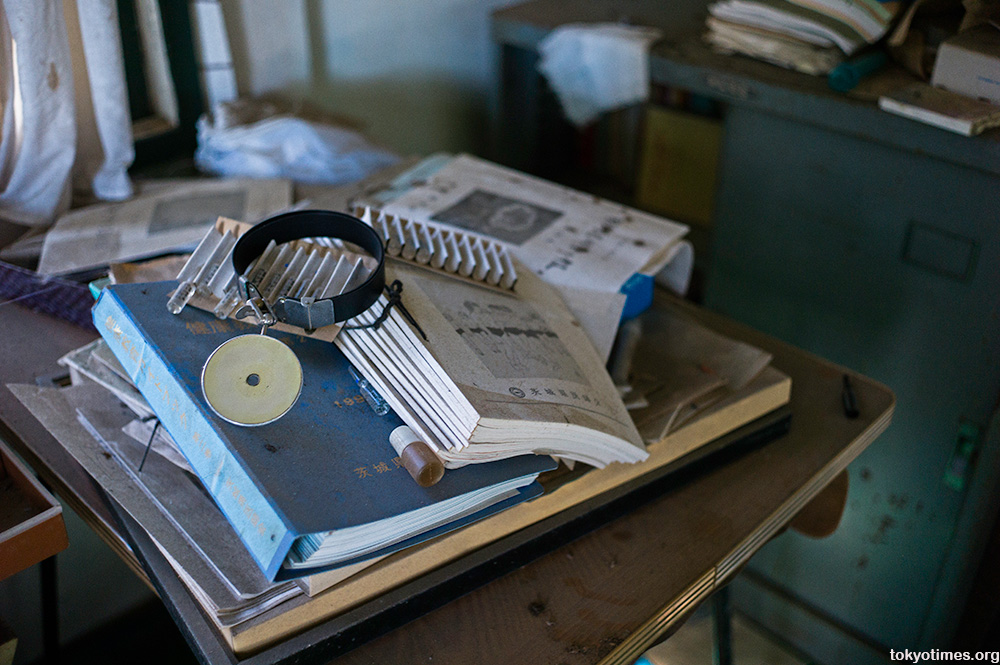
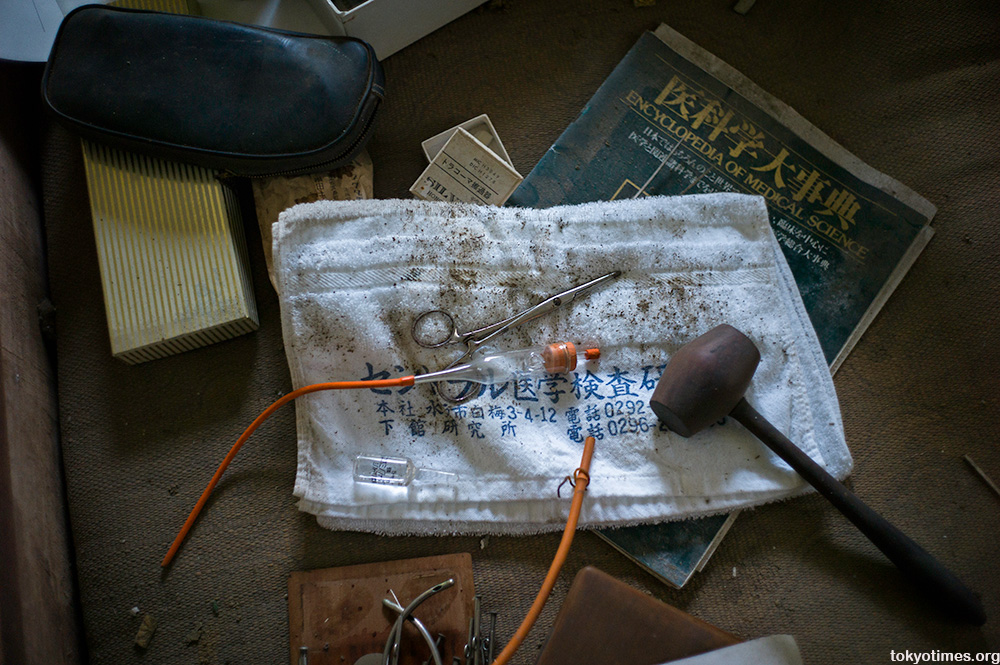
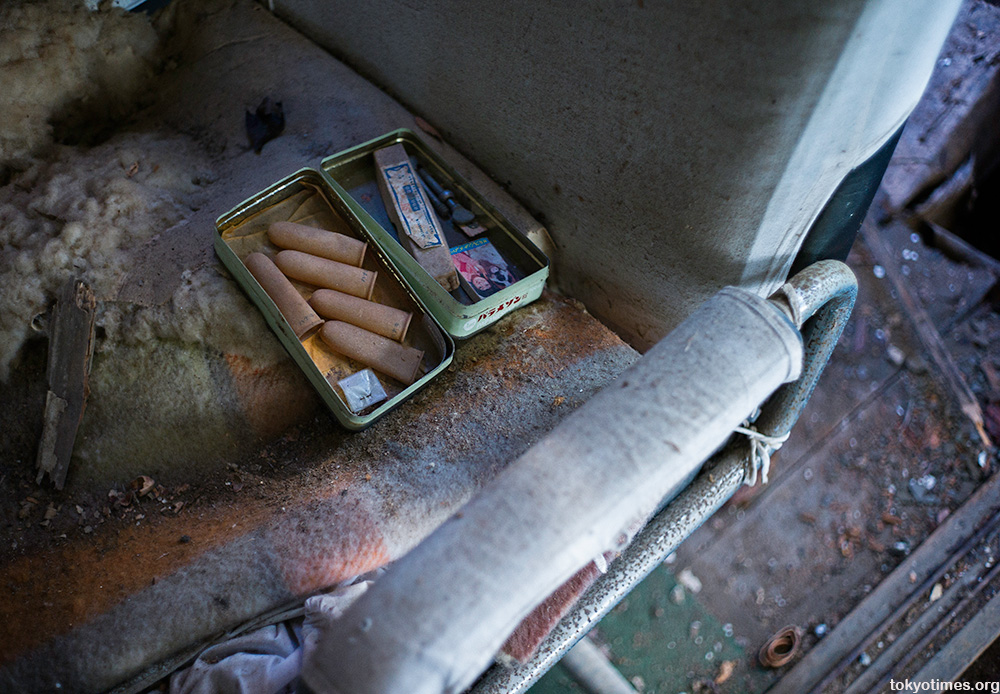
Along with more administrative details such as memos and phone numbers.
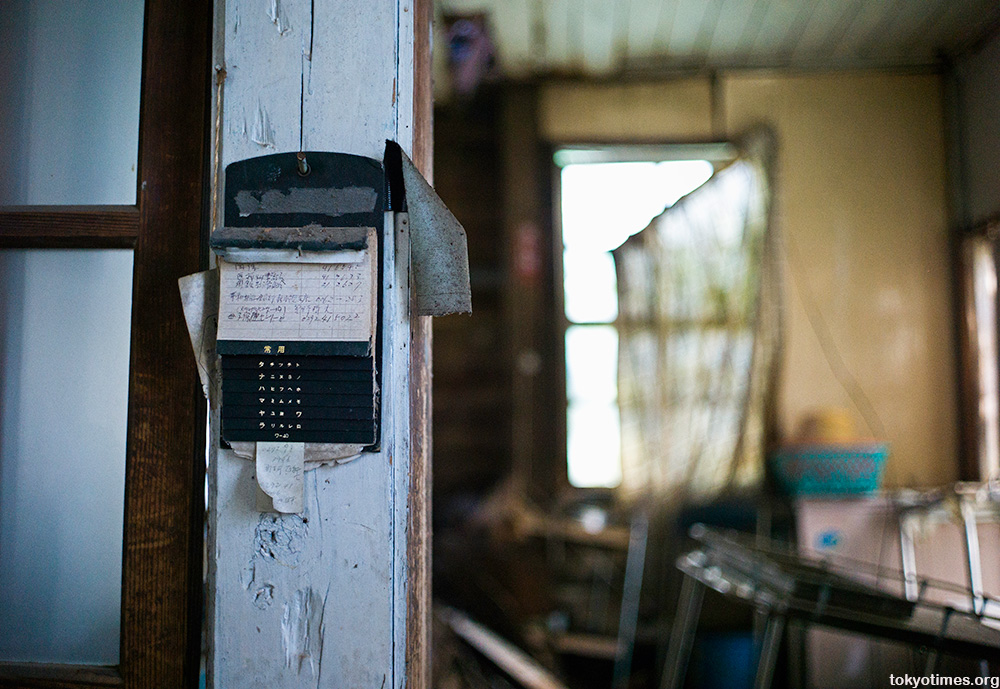
Not to mention the means of communication.
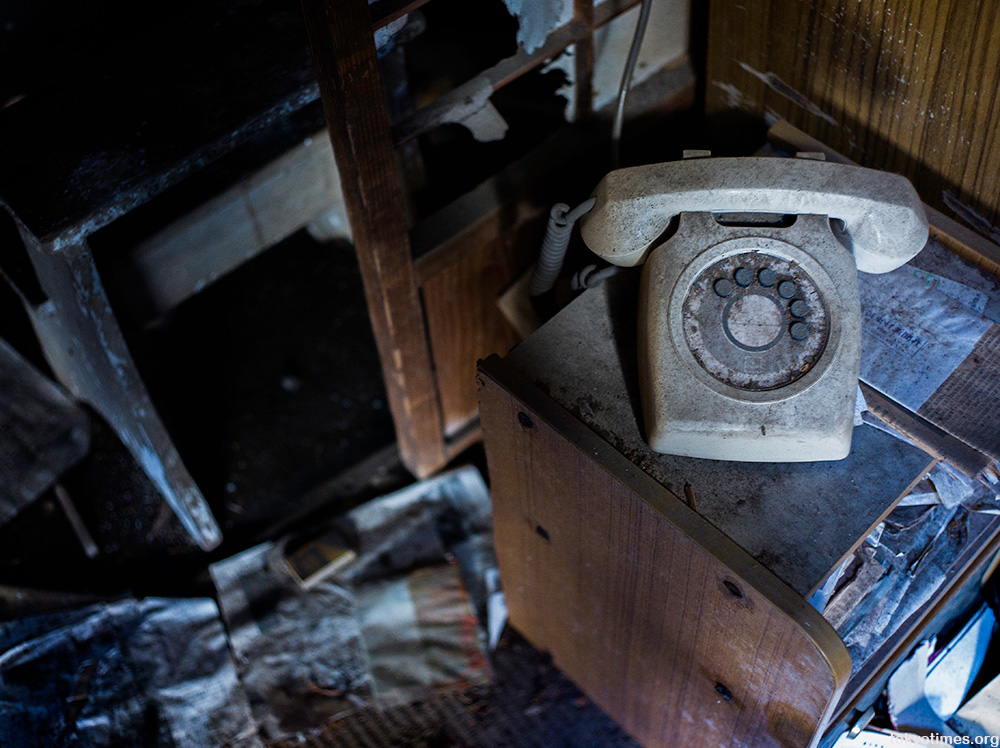
Time and the elements, however, have really taken their toll. Subsidence is presumably a major factor, which has left some parts almost completely intact, and others in an absolutely dreadful state.
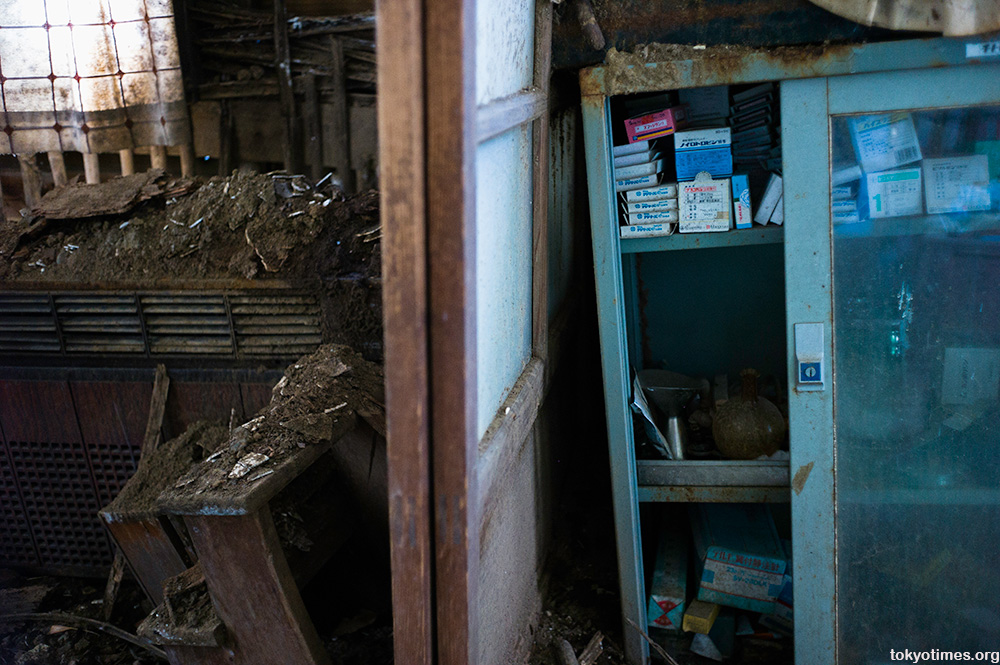
A fair bit having fallen down completely, with other sections rapidly heading that way.
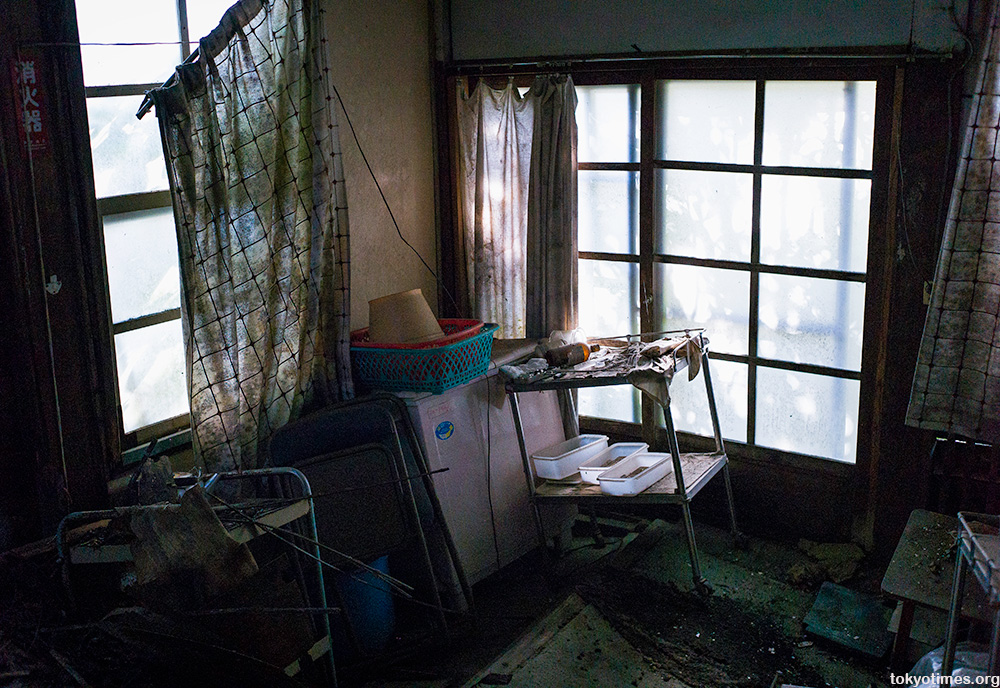
Taking, as they go, even more reminders of the past.
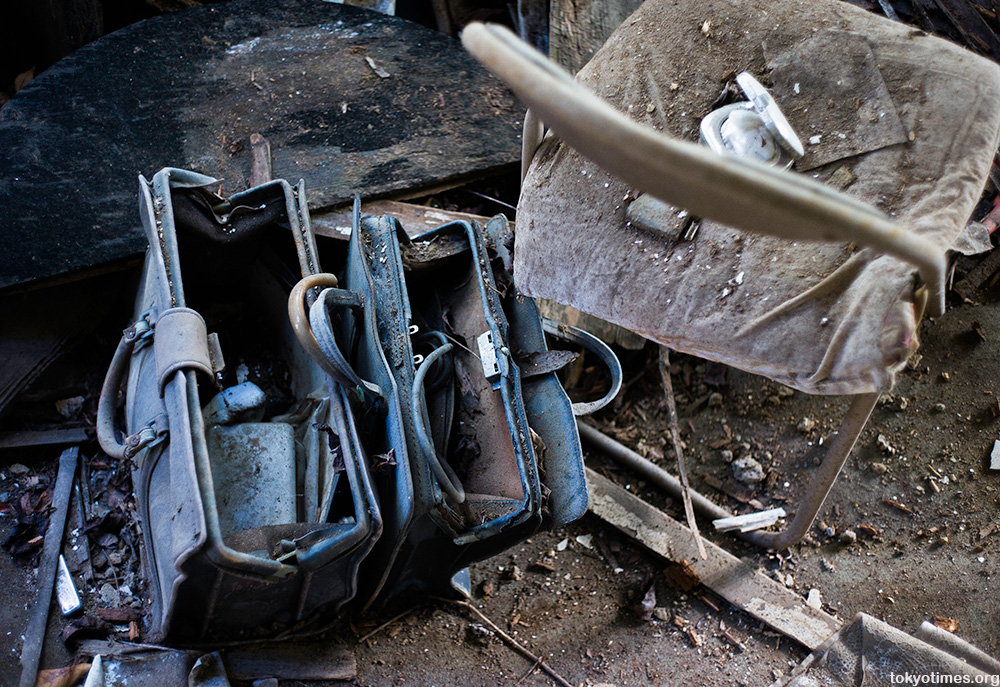
And it’s the past that in many ways makes the hospital so unique; something that is generally a factor with most haikyo/abandoned buildings. Whether it be a once opulent politician’s house, remote mountain village or memory-filled school — they all have stories to tell. Yet none of them are as shocking as the one belonging to the IK Hospital.
Back in 1992, for reasons undocumented, it’s reported that the head doctor went berserk, killing both the staff and patients — each and every one of them. A truly nightmarish event that obviously meant the immediate closure of the facility, and in turn its abandoned state today.
Details are unfortunately scarce, with numerous mentions on Japanese sites never linking to an actual news report, but it is assumed the murders occurred in the main hospital building — a structure that these days gives little away in relation to the horrors that went on there.
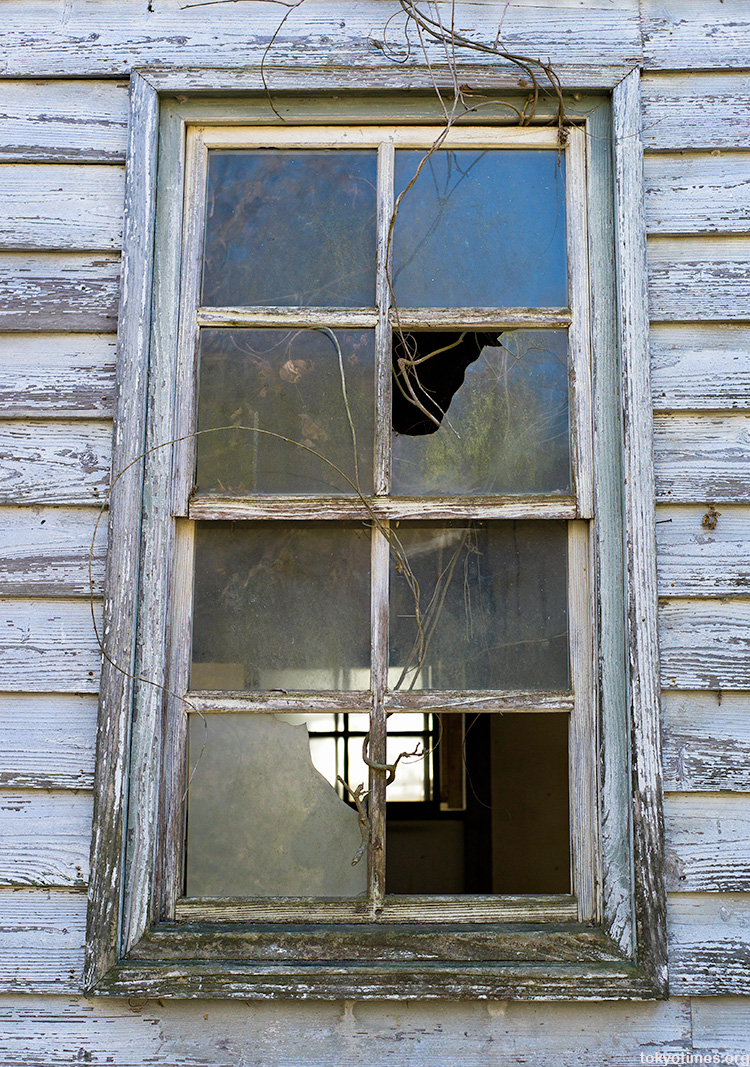
It too has suffered some pretty severe damage over the years, but unlike the surgery, it’s empty, with nothing in the way of hints about the murders, except perhaps this sad, solitary picture.
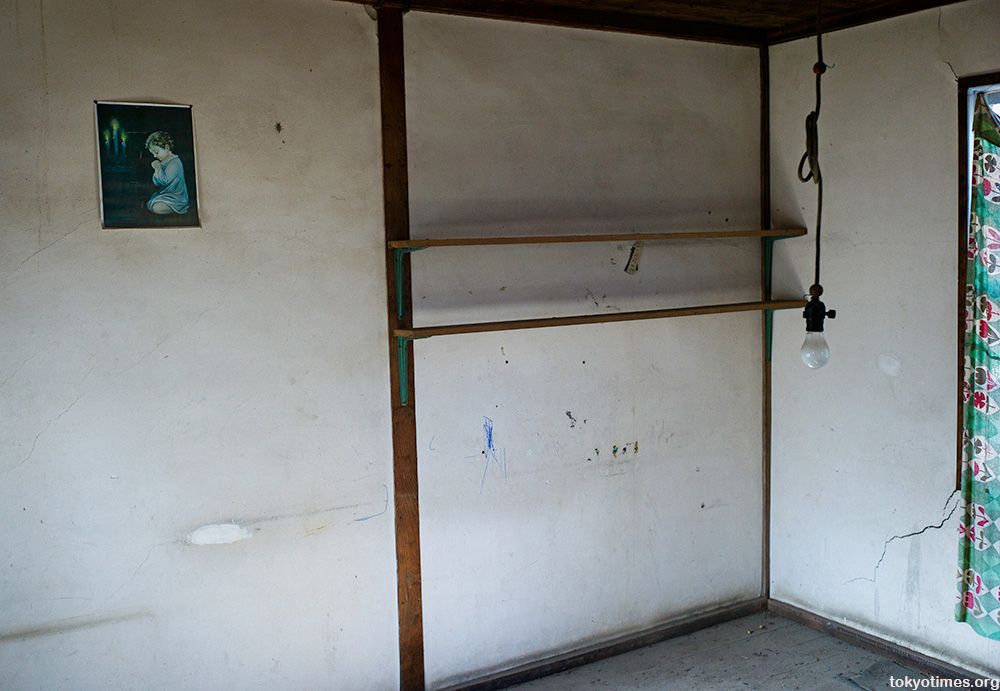
Tim K says
Do you know how the doctor killed them? Interesting that all signs of murdering have been cleared away, but everything else just abandoned.
Anyway, great photos and report.
Lee says
Thanks.
No, unfortunately not. It’s frustrating. There are a lot unanswered questions. How did the doctor kill them? How many were there. Did he/she also kill him/herself. And of course, why?
A news report of some kind would certainly help answer at least some of the questions. And confirm the events actually took place. It happening pre-internet is presumably a big factor. It would have only been in the newspaper. A trip to the local library may be the only way to find out.
Like you say though, the hospital being completely cleared and the surgery not, does suggest something happened there. But exactly what, and how, remains a mystery for now.
Willy says
Creepy indeed. But the first photo is so peaceful, almost inviting…as if to draw one into a thickening plot….
Lee says
That’s exactly how it felt too. Obviously the weather helped as well. But yeah, a very different story on the inside, although that said, I’ve been in other haikyo that have had a far more unpleasant vibe.
teabie says
And I was wondering, why the title as I was scrolling through the pictures. Reading about the history right at the end gave me the chills.
Lee says
Yeah, pretty shocking eh? Despite the old surgery, it really was hard to imagine such peaceful settings having such a horrible history…
Dean says
Very interesting. Incredible story too!
If you don’t mind me asking, how did you get in? Looks pretty much sealed up from the first pic.
Lee says
It was interesting. Partly because of the story, but also due to the wealth of stuff left in the surgery.
Very easily to be honest. The door wasn’t locked, so just moved the bench that was in front of it and walked in. Simple as that.
Durf says
Do you have any evidence that there was actually a criminal incident that took place here? Having tracked down the name of the place, I can find zero news on mass murders having happened at the facility (and I have access to databases that go back far enough to dig up stories if they existed). Don’t see any reason to call this anything other than a story made up by haikyo explorers to spook their peers.
Lee says
Nah, unfortunately not. As I mentioned in the post and the comments above, there are numerous mentions of a murder, but no actual reports confirming it. Without that I was obviously sceptical, but the empty nature of the hospital (and not the surgery) seemed to suggest otherwise. Plus some of the sites mentioning the story aren’t usually the type to spread false stories, particularly so as they don’t give away locations anyway.
But if you have access to such data, and nothing is coming up — which it clearly would for something like this — then it looks, whether intentionally spread or not, that the story has been made up…
Eido Inoue says
I also have access to pre-internet news sources searchable via computer and I also can find zero mention in any Japanese magazine or newspaper. Even doing a search for any murders associated with any doctors or patients turns up a surprisingly short list, which I did to see if it wasn’t simply a case of misidentifying the hospital. Nothing comes up for multiple homicides committed by physicians/doctors on patients or nurses in 1991, 1992, or 1993.
It’s pretty easy to get good digital indexed and searchable coverage of news (major newspapers and magazines) for the mid-80s era onward even from a public library, which subscribes to the appropriate (not free) databases and archives. All you need is a library card and an appointment to use the dedicated terminals (I do it all the time to read old å®˜å ± etc). It gets progressively harder for the early 80s and before and before as the material exists in libraries, but it’s in analog (non OCRed microfilm etc) form.
Lee says
Ok, cheers. Good to know.
Thanks a lot for the extra info too. Looks like someone made the story up and then it has spread. But good to know for sure.
john says
That’s a relief, but if I’m ever near a medical professional and I see one of those dolls then I might not take any chances!!
Lee says
Likewise. Murder or no murder, that waiting room was grim Particularly as it was still open in ’92. I know times have changed, and it’s over 20 years ago, but they haven’t changed that much, have they?
Steven says
Very interesting photos. I noticed the big thermometer in the waiting room displays the temperature in both Celsius and Fahrenheit — probably an artifact of the Occupation period. From the looks of things, I’m guessing the rest of the decor hadn’t been updated since the 1950s either.
I wonder what story is behind those shoes left at the entrance…
Lee says
That’s a good point. Hadn’t picked up in that. And yeah, there certainly hadn’t been much in the way of decorating done…
One of the doctors was an old lady, so I’m guessing they were her shoes.